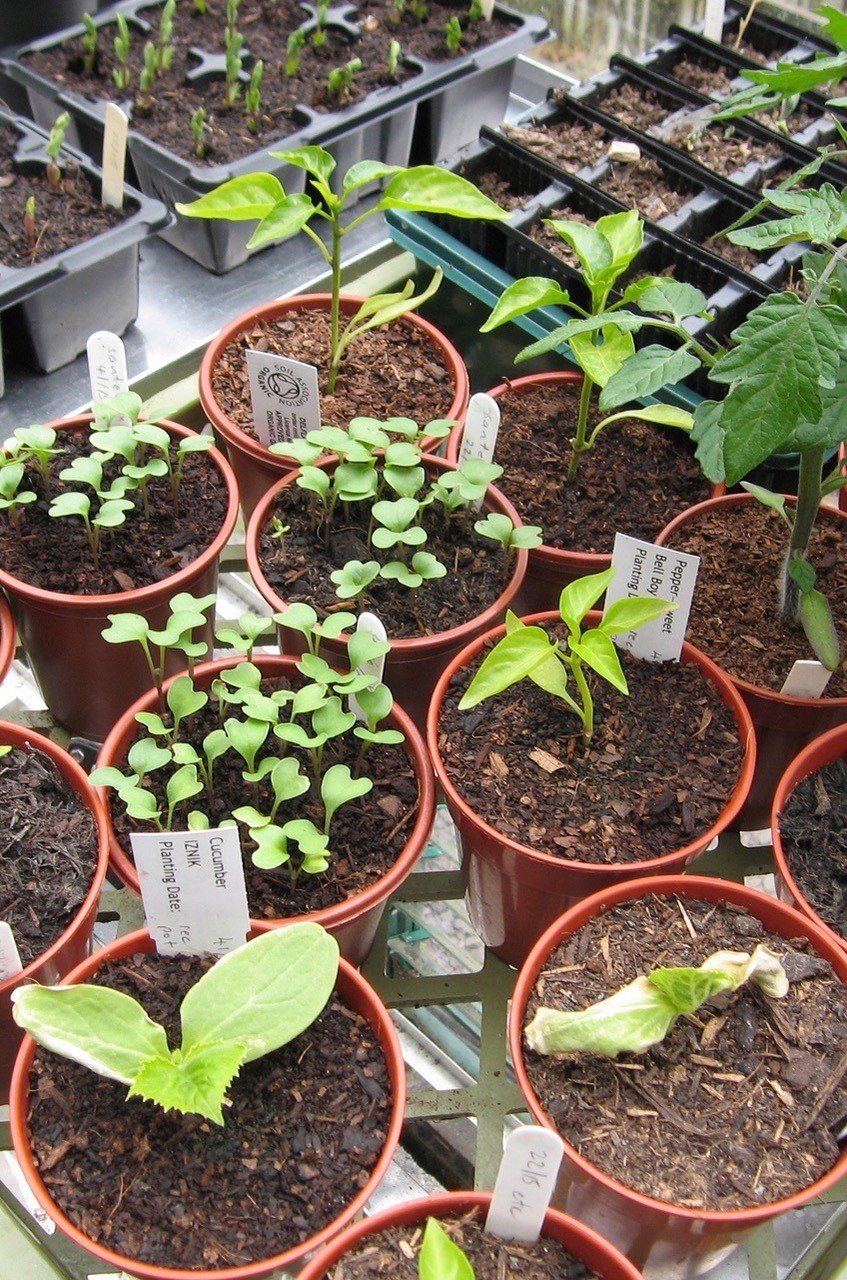For successful, stress-free sowing with no ecological cost, work to nature’s timetable and let the sun supply the power.
It’s here. The frogs know it; they’re back – defrosted after a few false starts – with an orgiastic vengeance. The dandelions know it; their patient rosettes are pushing up yellow-hinted buds. Nature all around knows it; blue and great tits are friskily checking out nest boxes. I know it; I can feel its emboldened warmth on my cheeks, even today, as winter’s latest assault fast turns to slush. But it’s in my greenhouse that I feel it most powerfully – the return of sunshine that’s got proper oomph to it. I’m done with February’s fits and starts; this is the real deal: late March’s equinoctial sunlight that’ll bring our gardens and greenhouses back to life.

Much life here is in stasis, in the shape of unsown seeds. I happily gave up sowing indoors before the end of March was in sight, many moons ago, and I can’t remember the last time I heated my greenhouse. And I no longer follow the gardening religion of lining a greenhouse with bubblewrap, or using a heater and/or an electric propagator. None of these practices is fit for gardening in the 21st century, when the living world around us – due to our actions – is facing unprecedented ecological upheaval.
And yet we see the same old page-filling advice churned out year after year in the gardening media, come hell or climate breakdown (‘climate change’ is being ditched in favour of more urgent frankness). We still trip over stacks of electric propagators at garden retailers, while catalogues are awash with every type of greenhouse heater going. Plug them in, fill them up, turn them on/up; it’s sowing time. ‘Get a head start on spring!’ echoes through winter’s twilight. Never mind the utter futility of it all when (no matter how many layers of bubblewrap) the nights plummet to -10C – and beyond. Same old, same old.
Don’t get me wrong. I still sometimes hanker to get going with my seed sowing, to ‘beat’ spring, to stay one step ahead of the seasons, to sow, nurture and coddle in my transparent nirvana – as a blizzard rages on the other side of the glass. But nowadays I hang on. I sit tight and wait, until the whiteouts have gone. I face off impatience, until the earth tilts and once again turns up its own thermostat, guaranteeing me (and my imminent seedlings) safer spring passage. That time starts now. Yes, night frosts will dog me (and you) until we slip from spring into summer, but I can work around nature’s fickleness. I hold fire because gardening is supposed to be fun (with some hard work mixed in), and I don’t want mine to have unexpected consequences for others’ gardens – where necessity outstrips fun – in places I may never see.

The use of any powered gardening equipment, which includes propagators and heaters, comes at a price. Most of the energy consumed in gardening is derived from fossil fuels: electricity flows from the burning of coal or natural gas, paraffin is synthesised from oil, while propane gas is bottled (some greenhouse heaters can even run on domestic gas). When we turn on any of these appliances, they either increase energy demand (think electricity), or they burn it at the point of use (think paraffin or bottled gas). At either end of the supply chain, igniting fossil fuels releases carbon dioxide, the main polluting ‘greenhouse gas’ that’s driving climate breakdown. That’s the ecological price of getting a ‘head start’ (or of mowing the lawn, blowing leaves around…). Our atmosphere doesn’t exempt the emissions from energy we burn for fun. They’re all the same.
Climate breakdown is global, and it’s accelerating. It turns up the dial in our shared ‘global greenhouse’ and it affects all of our fellow species; the fossil carbon we set free isn’t contained by our garden’s boundary fence. Our own species’ current trajectory is akin to closing a greenhouse’s doors and vents on the sunniest, hottest day of the year. And not opening them again. Not much fun at all – especially for the 140 million people in the developing world that the World Bank predicts will be forced, by climate breakdown, into mass movement and migration, between now and 2050, unless we urgently start cutting our energy use.
But wait! you cry, what about ‘green’ electricity derived from the sun or the wind; surely it’s OK to use that? I used to offer a glimmer of hope to those insisting on sowing amid winter’s gloom, by suggesting they switch to renewable energy. Not any more. The vast majority of us who get our fun from gardening, who do it for utter pleasure, rather than for sheer survival, are among the richest 10% of the world’s population. This 10% is responsible for around 50% of the ‘lifestyle’ emissions driving climate breakdown (the world’s poorest 50% is responsible for only 10% of such emissions). As part of the pampered 10%, I would rather my own patient, mindful gardening helped to cut demand for energy full stop, no matter its origin, be it brown or green. Our gardening, don’t forget, is strictly for fun, not to fend off famine.
I’m very happy powering my gardening with the clean, free and non-polluting modern sunshine that’s warming me and my greenhouse right now (it took eight minutes to travel 93 million miles). I can have copious fun, without liberating any of the ancient, climate-changing sunshine that was locked away in fossil fuels millions of years ago, but is disrupting countless lives today.

My sun-powered sowing techniques are simple yet effective. I’m unhurried, especially by the strictures on seed packets. I err on the side of being a tad late. As March morphs into April, the days get warmer and the greenhouse grows balmier by day and night. I sow in pots, using a modern and reliable (and usually a Which? Best Buy) peat-free compost, and keep the pots in stackable trays. I use bug-free tap water to keep the compost just moist. During the day, I stand the trays in the greenhouse and cover them with old compost bags, black side up (any black sheet will do). This soaks up the sun, warming the pots beneath, but stops them drying out too fast on fierce spring days. On chilly nights I’ll bring the trays indoors. If you’re of an age that remembers what they are, and live somewhere blessed with one, they can go in an airing cupboard. If the sun’s elusive – or if winter strikes back – I’ll keep the trays in a warmish place indoors day and night, but keep a watch for any seedlings coming up. It’s high-tech stuff, this 21st-century gardening.
I don’t faff about with plants requiring constant high temperatures to germinate, and/or which need sowing in the middle of winter. I can click to mail-order young peat-free plants of aubergines, peppers, tomatoes and the like (growers have far more efficient greenhouse heating systems).
As April slides into May, the commute of trays lessens. By then, I find almost anything will germinate in my greenhouse, even with the temperature difference between day and night. Powered propagators simply provide a constant temperature; the only trade-off with not using one is that it takes a little longer for seedlings to show. Oh, and I won’t be helping to close our global greenhouse door, so that seeds sown by the world’s most vulnerable risk being a no-show.
All this seed-sowing talk has me fidgeting. The seed packets are already well-thumbed. Labels are scrubbed clean. I’m raring to go, but I’ll hold tight for a bit longer. Come on spring, bring it on. Bring me sunshine.
Text and images © John Walker
Find John on Twitter @earthFgardener


